
A comparison of the wavelength of two waves with different frequencies.
- Subject:
- Physics
- Science
- Material Type:
- Simulation
- Provider:
- Utah State Board of Education
- Provider Set:
- Utah SEEd Textbook Resources
- Author:
- SMUPhysics
- Date Added:
- 02/25/2021

A comparison of the wavelength of two waves with different frequencies.
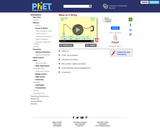
Explore the wonderful world of waves! Even observe a string vibrate in slow motion. Wiggle the end of the string and make waves, or adjust the frequency and amplitude of an oscillator.
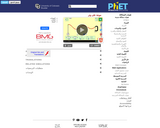
Watch a string vibrate in slow motion. Wiggle the end of the string and make waves, or adjust the frequency and amplitude of an oscillator. Adjust the damping and tension. The end can be fixed, loose, or open.
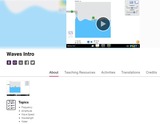
Make waves with a dripping faucet, audio speaker, or laser! Adjust frequency and amplitude, and observe the effects. Hear the sound produced by the speaker, and discover what determines the color of light. (Phys 4.1, 4.2)

This informational text explores the characteristics of blue whales and a simple food chain of the Southern Ocean. The text is at a reading level appropriate for a reading level of fourth through fifth grades. It is a pdf file that includes only the text and a glossary.

There's no need to don a space suit if you want to experience weightlessness. In this video segment adapted from ZOOM, two members of the cast drop a cup of water with holes in it to demonstrate how free fall can create a momentary condition of "weightlessness".
Recommended for: Grades K-8

This video/animation shows that a molecule of water is made up of oxygen and hydrogen atoms. When oxygen and hydrogen atoms exist alone, their properties are different from the properties they have when they are chemically combined to form a water molecule.

This formative assessment item discusses common misconceptions about volcano location around the world. Resources include background and content information as well as alignment to the National Science Education Standards. The probe could easily be modified to be used with a study of earthquakes instead of volcanoes. Teachers can access other resources including facts about volcanoes and lesson ideas.

In this activity, learners make a stroboscope--a spinning disk with slits around the edge that you look through. Brief but frequent glimpses of images seen through the slits lead to a surprising result, which teaches learners about vision and the human nervous system. The activity includes three short online videos: Introduction, Step-by-Step Instructions, and What's Going On. Also available: a concept map and a "Going Further" document that suggests variations on this activity.

In this animated video segment adapted from NASA, astronomer Doris Daou explains how the forces of speed and gravity keep the Moon in a constant orbit around Earth.
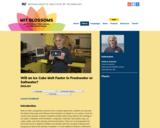
With an often unexpected outcome from a simple experiment, students can discover the factors that cause and influence thermohaline circulation in our oceans. In two 45 minute class periods, students complete activities where they observe the melting of ice cubes in saltwater and freshwater, using basic materials: clear plastic cups, ice cubes, water, salt, food coloring, and thermometers. There are no prerequisites for this lesson but it is helpful if students are familiar with the concepts of density and buoyancy as well as the salinity of seawater. It is also helpful if students understand that dissolving salt in water will lower the freezing point of water. There are additional follow up investigations that help students appreciate and understand the importance of the ocean’s influence on Earth’s climate.
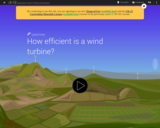
Learn how a wind turbine works.

In this Matter and Energy Name Game, students learn each other’s names through a chant about energy and matter, then each dance in the spotlight when it’s their turn. It gives students a fun introduction to some words relating to matter and energy that the instructor can refer back to during later learning experiences. It also provides an opportunity for each student to feel “seen” at the beginning of a field experience.

This interactive resource from the Exploratorium calculates your weight on other bodies in our solar system and offers an explanation of mass and weight and the relationship between gravity, mass, and distance.